The Role of Tkemali Plum Sauce in Everyday Dishes
41 min read Discover how tart, herb-laced Tkemali elevates everyday meals on grilled meats, potatoes, eggs, and greens, with tips on varieties, seasonality, and smart pairings. October 15, 2025 00:07
It begins with a smell—sharp and green, like the moment you break open a sour plum beneath your thumb. In Tbilisi’s Deserter’s Bazaar, where pomegranates gleam like garnets and walnut vendors crunch through shells by muscle memory, a woman in a wool shawl hands me a teaspoon of jade-colored tkemali from a recycled jam jar. The sauce glows like rain-wet moss. It hits the tongue with an urgent sourness, then tumbles into bitter herbs, minty-cool pennyroyal, garlic warmth, and a soft fenugreek hum that lingers like a chorus. My mouth waters again before I’ve even swallowed. There’s a reason Georgians put tkemali on their tables the way others put salt.
In Georgian cooking, tkemali—an herb-laced sauce made from cherry plums—isn’t a novelty or a garnish. It is an everyday compass; a way to steer fat toward brightness, carbs toward lift, and the ordinary toward something that tastes like the first day of spring. It is what fried potatoes want. It is what grilled pork needs. And once you learn to use it, your own cooking starts to tilt toward balance in ways that feel inevitable, even when you’re 2,000 miles from Tbilisi.
What Tkemali Is and Why It Matters

Tkemali is Georgia’s sour heart: a plum sauce made primarily from wild or cultivated cherry plums (Prunus cerasifera), simmered, strained, and vigorously seasoned. There are two main moods:
- Green tkemali, made from early, unripe plums: neon-tart, grassy, and herbal. This is the sauce that nips your tongue and yanks salt and fat into harmony.
- Red tkemali, made from later, riper plums: rounder, slightly sweeter, and often a little smokier in aroma. It still has bite, but it’s a warmer one.
What sets tkemali apart from other sour condiments isn’t just that wallop of fruit acidity; it’s the specific Georgian herb and spice architecture. Classic seasonings include garlic, coriander seed, dried red pepper, dill, cilantro, and two signature notes that instantly whisper “Tbilisi” to anyone who’s lived there:
- Ombalo (pennyroyal): mint-adjacent but more resinous, with a camphor-bitter snap. Used dried and in small amounts, it lends an unmistakable cool-green backbone.
- Utskho suneli (blue fenugreek): not the same as Indian fenugreek; it’s gentler, haylike, and slightly sweet, rounding out the sharp edges.
Depending on the household or region, you might also encounter ground dried marigold petals (kviteli kvavili), black pepper, or summer savory. The result is a sauce that walks the knife’s edge between refreshing and austere, familiar and bracingly specific. If you’ve only known “plum sauce” as a sugary dip from a takeout packet, prepare for a recalibration: tkemali is lean, grown-up, and built for real food.
A Walk Through the Market: Shades of Green and Red
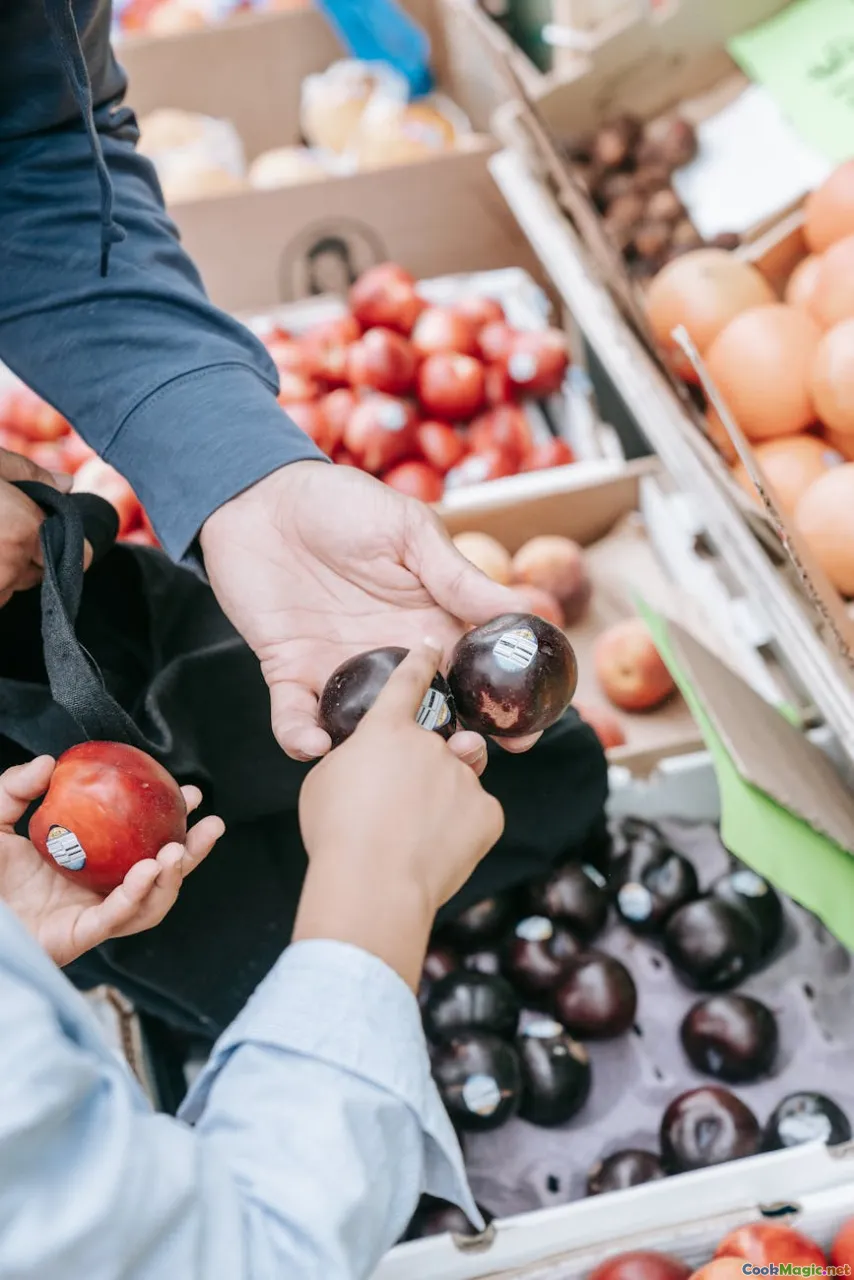
In spring, vendors in the market pile cherry plums into shallow bowls, their skins tight as drumheads. The early ones have a sheen that suggests lime and sea glass; shake the bowl and they clack like marbles. Later, the plums deepen into garnet bruise and the air grows richer with ripeness and the faint perfume of stones. Near the herbs, you can smell pennyroyal the moment you approach: not toothpaste mint, but the smell of crushed meadow under your boots.
This is where you hear the first opinions. “Green for pork and potatoes,” says one seller, tapping her jar with a wooden spoon. “Red for trout,” counters another, squeezing the jar so the sauce peeks under the lid. I hover like a happy thief, dropping coins for tastes and mental notes. The green tkemali is bright enough to make my teeth sing; the red sits silkier on the spoon, a little richer, as if someone lined its pockets with warmth.
At a stall that also sells adjika—another Georgian essential, a raw red pepper paste that smells like embers and garlic—I watch a shopper buy a bottle of green tkemali and a bundle of tarragon. “Chakapuli,” the vendor nods, naming the spring lamb stew that tastes like an April rainstorm poured over meat. Tkemali isn’t the star in that dish—lamb and tarragon lead—but its soul runs right through it. That’s the beauty of tkemali in Georgian cooking: it often plays a support role, but without it, the balance collapses.
Anatomy of Flavor: Sour, Herbaceous, Bitter, Heat
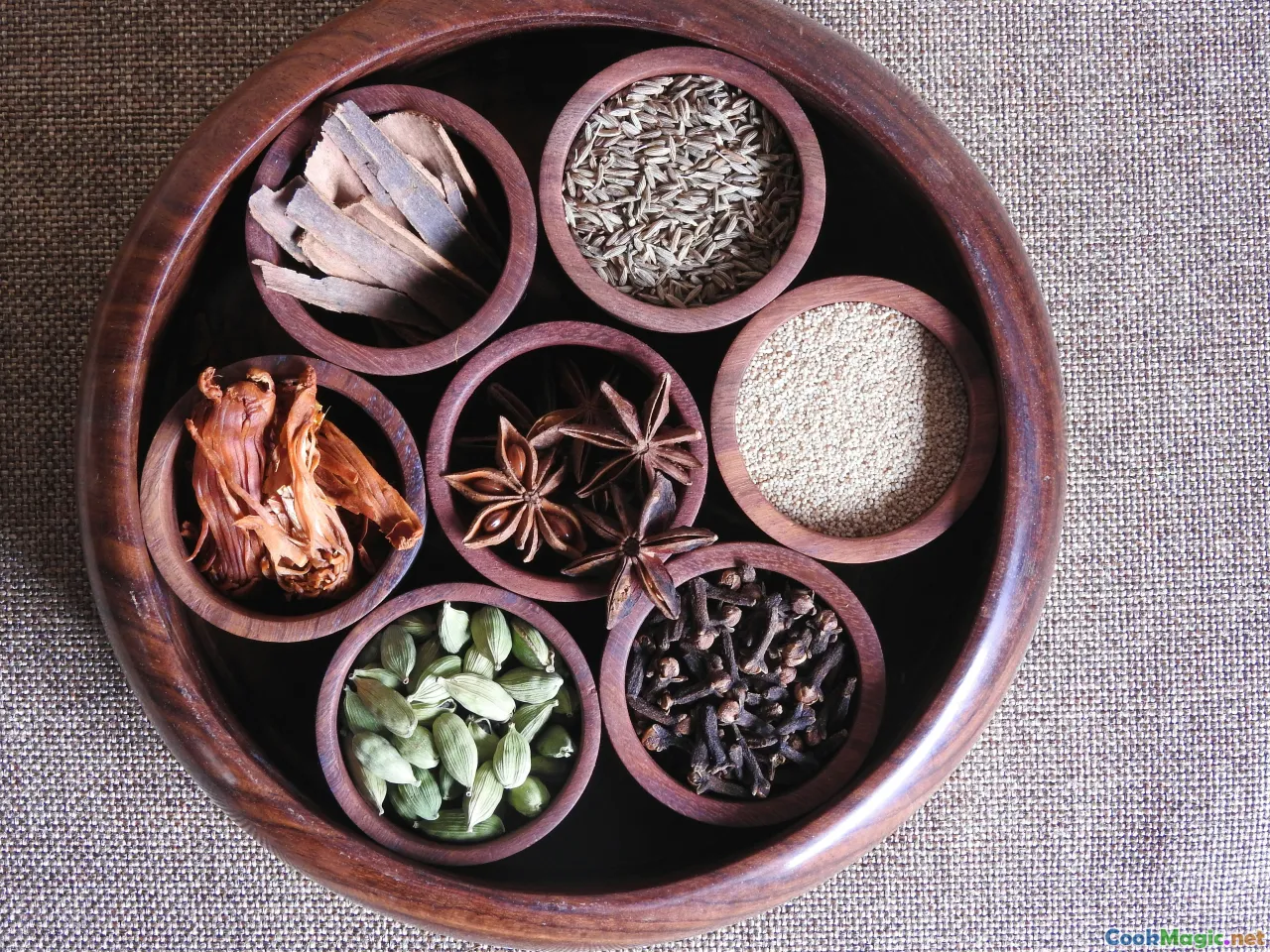
To cook well with tkemali, you want to understand its geometry:
- Sour: The dominant note. From green cherry plums, the sour is bright, even electrical—similar to sorrel or young rhubarb. It cuts fat and revives leftovers with merciless efficiency.
- Herbaceous: Dill and cilantro add freshness; pennyroyal adds that meadow-camphor complexity. This is not simply “minty”; it’s a sharp, cooling bitterness that crowds out flab.
- Bitter: Yes, a gentle bitterness from pennyroyal and marigold. This keeps the sauce from reading as fruity or juvenile. The bitterness is what makes you think about another bite.
- Heat: The pepper warmth is a murmur, not a shout. Tkemali isn’t a hot sauce in the American sense. The heat should be the glow behind the curtain.
- Umami and bass notes: From garlic and blue fenugreek. Coriander seed contributes citrus-pepper resonance, knitting sourness into savory.
When a dish feels heavy, tkemali is the lever that tips it upright. When a dish feels flat, tkemali is the splash of lime that suddenly makes the music audible.
How to Make Authentic Tkemali at Home (Without Losing Its Soul)

It’s an easy sauce once you respect the process: cook the fruit gently, strain, season assertively, and keep it bright. Here’s a method that has served me well, learned in fragments from a grandmother in Kakheti and a young cook in Tbilisi who insisted on weighing the herbs, then winking as she ignored her scale.
Ingredients (yields about 1.2 liters):
- 2 kg green cherry plums (Prunus cerasifera) or a mix of unripe and just-ripe
- 300–400 ml water, plus more as needed
- 18–22 g fine sea salt (start with 18 g; adjust)
- 20 g garlic, finely grated (about 5–6 cloves)
- 8 g ground coriander seed
- 5 g utskho suneli (blue fenugreek)
- 2 g dried red pepper flakes (adjust to taste)
- 2–3 g dried ombalo (pennyroyal), crumbled very finely
- 10 g fresh dill, finely chopped
- 10 g fresh cilantro, finely chopped
- 1 tsp ground dried marigold petals (kviteli kvavili), optional but lovely
- 5 g sugar, optional and only if your plums are aggressively sour or bitter
Method:
-
Wash and simmer: Put plums in a nonreactive pot (enamel or stainless steel). Add 300 ml water. Bring to a gentle simmer over medium heat, stirring often so the skins don’t scorch. The plums will collapse in 10–15 minutes; keep them moving until they slump into a loose mash.
-
Strain for texture: Pass the mash through a food mill or a sturdy sieve into a clean pot, pushing to catch all the pulp. Discard skins and pits. The puree should be velvety, somewhere between heavy cream and ketchup in thickness. Add a splash of water if it’s too thick to stir easily.
-
Season while warm: Over low heat, stir in salt, garlic, coriander, fenugreek, red pepper, ombalo, dill, and cilantro. Keep it from boiling—just a gentle steam rising is ideal. Taste frequently. The sauce should be bright, savory, and slightly bitter on the finish. Add marigold if using; it contributes a sun-dried, haylike perfume that’s incredibly Georgian.
-
Balance: If the sourness verges on metallic, a teaspoon of sugar can round the edge. If the heat feels shy, another pinch of red pepper. If the sauce feels muddy, a little more salt and a few drops of water to open the flavors.
-
Cool and store: Ladle hot tkemali into sterilized jars, seal, and cool at room temperature before refrigerating. It will keep for weeks in the fridge; months if properly canned. The color may mute slightly over time—that’s natural.
Notes on ombalo: Pennyroyal is potent. Use dried leaves sparingly; too much tastes medicinal. If you can’t find ombalo, combine a tiny pinch of dried mint with a few torn leaves of fresh tarragon or lemon balm to approximate that cool-green bitterness. It won’t be identical, but it will be honest.
Regional Variations and Family Secrets

Georgia’s size belies its culinary diversity, and tkemali travels with the terrain.
- Kakheti (east): Predictably wine country favors structure—their tkemali can skew garlicky, with a distinct coriander echo to stand up to grilled pork (mtsvadi). Pennyroyal is a whisper, not a shout.
- Guria and Adjara (west): You’ll taste more heat and sometimes a silkier texture, occasionally even a spoon-tip of sugar in red tkemali to flatter fish and the butteriness of Adjarian khachapuri.
- Samegrelo: Known for spice, they might nudge the pepper up and sneak in an adjika influence—tkemali that makes your lips hum, especially with cornmeal mchadi and sulguni cheese.
- Tbilisi home kitchens: A democratic mix. I’ve had “city tkemali” with perfumed marigold and thyme’s ghost; I’ve had spare versions where green plum and salt did most of the talking, like a palate-training exercise.
One Kakhetian grandmother taught me to crush a few plum pits with a mallet and simmer them in the mash for five minutes, then strain them out, chasing a faint almond perfume—subtle, not amaretto-sweet. Another family insisted on adding a spoon of raw tkemali at the end, off the heat, to “wake the cooked sauce back up.” Each recipe carries a personality; what unites them is a refusal to let the sauce go flabby.
Everyday Pairings: From Street Grills to Weeknight Eggs

The best way to understand tkemali is on a plate.
- Mtsvadi (grilled pork skewers): Find a street stand in Telavi when the smoke is blue and the meat still hisses. Drag a charred cube through green tkemali. The fat’s sweetness expands; the smoke relaxes; the sour comes in like lemon crushed over hot coals.
- Ojakhuri (pork and potatoes): A sizzle of pork drippings, crisp potatoes, and a spoon of green tkemali cut with a little water so it drapes rather than gloops. Top with raw onion moons and cilantro. A Tuesday dinner that tastes like a festival.
- Fried potatoes: Georgians have a way with potatoes—often pan-fried in generous oil until crunchy. Tkemali is their ready-made counterpart. The sour acts like vinegar on chips, but with herbal depth.
- Chicken tabaka: A butterflied chicken pressed under a weight until its skin is lacquered and the flesh juicy. Red tkemali sidles up beautifully, nudging the roasted notes toward brightness.
- Trout from a mountain stream: A clean, fast-cooked fish doesn’t want sweetness; it wants acidity and aroma. Red tkemali, thinned slightly and warmed, can be brushed on like an herbed glaze.
- Khinkali (soup dumplings): I’ve seen tkemali on the table; purists will object, but a dab on the nub of dough after you’ve sipped the broth is a small heresy that works.
- Weeknight eggs: Scramble with a knob of butter, slide onto toast, and streak with tkemali. The sour cuts through the fat and makes the herbs pop. Add crumbled sulguni or feta if you like.
The principle behind each pairing: fat + starch + char want acid + herbs. Tkemali provides both in one spoon.
Ingredient vs Condiment: Two Ways to Use Tkemali

Most people treat tkemali like ketchup or salsa—spooned at the table. That’s half the story. Used in cooking, it behaves like a well-mannered acid, transforming pan sauces, marinades, and braises.
As a marinade: Whisk 3 tablespoons green tkemali with 1 tablespoon neutral oil, 1 crushed garlic clove, 1 teaspoon ground coriander, and a pinch of salt. Toss with chicken thighs or pork for 30–60 minutes. You’re not tenderizing; you’re perfuming and laying down acidity that will turn radiant under heat. Grill, then swipe with fresh tkemali as it rests.
As a glaze: Reduce 1/2 cup red tkemali with 1 tablespoon honey and a spoon of water to a nappe consistency. Brush onto roasted carrots or salmon in the last five minutes. The glaze should be tangy first, sweet second—never sticky-sweet.
Deglazing a pan: After searing pork chops, pour off excess fat; add 1/4 cup green tkemali and 1/4 cup water or stock. Scrape the fond, simmer 1–2 minutes, swirl in a teaspoon of butter, and finish with black pepper. It’s a 90-second sauce that tastes like you meant it all day.
Dressing: Whisk 1 tablespoon tkemali with 2 tablespoons good olive oil, a pinch of salt, and a little grated garlic. Toss with shredded cabbage, dill, and sliced cucumber for an improvised Georgian-leaning salad.
In beans: Stir a spoon of tkemali into a pot of lobio (stewed kidney beans with onions and walnuts) right before serving. The sauce turns dense comfort into something lifted, the way a squeeze of lemon lights up hummus.
Snapshot Recipes: Quick Paths to the Tkemali Habit

- Five-Minute Pan Sauce for Steak and Potatoes
- Sear a steak. Rest it. In the hot pan, toss in a handful of boiled or par-cooked potato cubes with a splash of oil until crisp. Spoon 2 tablespoons green tkemali, 2 tablespoons water, and a small knob of butter into the pan. Toss the potatoes just until coated, scatter with dill. Slice the steak and spoon the pan sauce over the top. The sour threads itself through the beef like a bright wire.
- Tkemali Yogurt for Everything
- Mix 2 tablespoons red tkemali into 1 cup strained yogurt, with a pinch of salt and a drizzle of olive oil. Use as a sauce for grilled eggplant, lamb kofta, or even a dip for torn shoti bread. The tang-on-tang is addictive.
- Tomato-Tkemali Skillet Eggs
- Soften a diced onion in oil, add one grated tomato and a pinch of adjika if you have it. When jammy, swirl in 2 tablespoons green tkemali. Crack in eggs. Cover until just set. Shower with cilantro. Serve with piping hot mchadi (cornbread) or toast.
- Roasted Cauliflower with Tkemali and Walnuts
- Roast cauliflower until blistered. Toss with a spoon of red tkemali, a squeeze of lemon, crushed toasted walnuts, and dill. A honeyed edge optional, but the sauce itself provides the backbone.
Tkemali Beyond Meat: Vegetables, Beans, Fish, and Bread

Vegetables: Eggplant loves fat; tkemali loves to pierce it. Grill thick slices brushed with oil until smoky. While they rest, drizzle with red tkemali loosened with a bit of water, then top with a chopped salad of tomatoes, onions, and cilantro. The sauce’s herbal bitterness reins in eggplant’s tendency to pout.
Beans: Traditional lobio matures beautifully under a spoon of green tkemali—applied at the end, not cooked in. The sauce brightens bean earthiness and harmonizes with the walnut-and-blue-fenugreek notes often present in the dish.
Fish: Trout is common in Georgian mountain regions, fried in butter until crackling. A line of red tkemali across the top, and suddenly you taste the sweet nuttiness of the butter more distinctly. With oily fish like mackerel, green tkemali’s sharper edges do the heavy lifting.
Bread and cheese: Shoti (canoe-shaped Georgian bread) dipped in tkemali feels like dunking into late spring. With sulguni or imeruli cheese, the sour turns creamy salt into something almost floral.
Vegetable stews: Ajapsandali, a Georgian late-summer stew of eggplant, peppers, and tomatoes, is soft and sweet by nature. A trick I learned from a Tbilisi cook: stir in a teaspoon of green tkemali off the heat to rouse the dish, like cracking a window after a long night.
The Science of Sour: Acidity, Preservation, and Balance
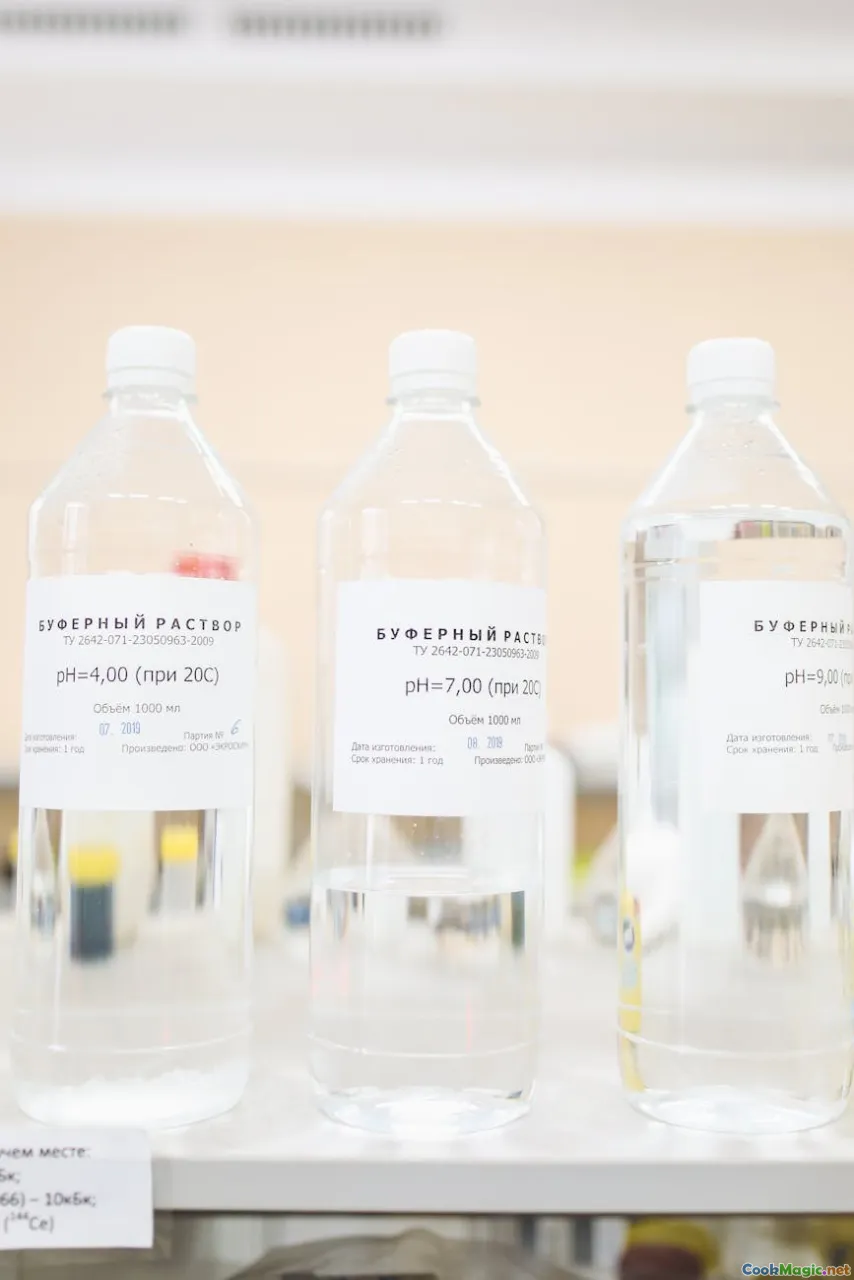
Tkemali’s pH typically falls below 4, comfortably acidic. That’s good news for safety and shelf life, and it’s why Georgian households line pantries with bottles corked for winter. But acidity alone doesn’t make a sauce sing—distribution and context do.
When you cook the plums, their tartaric and malic acids concentrate. Straining removes skins and pits that can add bitterness, but some bitterness is desirable, so the choice of herbs rebuilds that edge in a controlled way. Salt is crucial: it doesn’t simply make the sauce saltier; it suppresses harshness and lets you taste the herbs and garlic. The small amount of sugar some cooks add isn’t about making the sauce sweet; it’s a matrix tweak, rounding the corners when your plums are aggressively puckery.
In cooking, tkemali can curdle dairy if added at high heat; fold it in off the flame when mixing with yogurt or cream. As a deglazer, its acids free browned bits efficiently. And because the herbs are volatile, long boiling will hollow the sauce out. Keep it hot enough to mingle, cool enough to preserve.
Storage notes: Hot-fill sterilized jars and a proper seal will keep tkemali stable for months in a cool pantry; once opened, refrigerate. The color of green tkemali darkens over time—chlorophyll’s fate. To keep it bright, store in smaller jars you’ll finish quickly, limiting oxygen exposure.
Cooking with Constraints: Substitutions Outside Georgia

Sometimes a sauce’s soul is tied to a place. But you can work close to the flame.
- Plums: True cherry plums are ideal. If unavailable, use the sourest unripe plums you can find, or a mix of underripe green plums and a handful of tangy green gooseberries or sorrel to amplify acidity and add green notes.
- Pennyroyal: Omitted entirely if you’re unsure; or approximate with a pinch of dried mint plus a whisper of lemon balm or tarragon. Use a light hand—the goal is a cool-green lift, not a candy-mint blast.
- Blue fenugreek (utskho suneli): Seek it at Georgian or Caucasus markets. If truly unavailable, use a very small amount of ground fenugreek leaf (kasoori methi) and a hint of toasted fenugreek seed, but keep it sparse; Indian fenugreek is stronger and can bully the sauce.
- Dried marigold: Optional. If you want that haylike perfume, a micro pinch of saffron steeped in hot water can add a floral dryness—very little. Or skip; better no marigold than a wrong one.
Above all, respect the salt-acid-bitter-herb balance. Better a clean, simple, sour-herb sauce than an overcomplicated imposter.
A Noon in Kakheti: Lunch Among Vines

On a breezy noon in Kakheti, where the sky feels several sizes too large, I ate a lunch that happily ruined me. The table was wood scarred by decades of knives. There was wine from a qvevri—amber, cloudy, apricot-scented—and a platter of mtsvadi. The pork came smoky and pink in the center, threaded on skewers still warm. A bowl of green tkemali sat in a low clay ketsi. Its surface had a thin, immodest gloss.
We tore shoti with hands and pinched salt flakes. Fingers glistened. Someone poured, and someone else squeezed lemon, only to be waved off—“No need. We have tkemali.” We did. I watched how people used it: never drowned, always dabbed, most often touched to the browned edge where fat collected. They treated tkemali like a lens rather than a coat.
Later, a plate of tomatoes: thick, warm from the sun, sprinkled with purple basil. A spoon of red tkemali slid between the slices. The room smelled like crushed stems and garlic. Nobody talked for a minute because we were busy with the bright silence that only happens when food hits its mark.
Restaurants and Tables You Can Taste It At

In Tbilisi, I tasted a particularly clean, green tkemali at Shavi Lomi, spooned next to fried jonjoli and grilled pork. At Pasanauri, while khinkali took the stage, a side of tkemali hovered on the table, half-ignored until someone dragged a potato through it and lit up. The wine bar Vino Underground once set out a small dish of house tkemali with their bread, a quiet nod to how Georgians eat at home: bread, cheese, herbs, and a lively acid to keep your mouth curious.
Markets are the true classrooms. Deserter’s Bazaar remains my favorite to taste along a line of jars, but you’ll find excellent versions in Batumi’s market too, where sea air sneaks into everything, and where red tkemali seems to speak a little louder.
Serving Rituals and Table Etiquette

Tkemali arrives at the table in a small bowl, often clay or enamel, never fancy. At a supra—a Georgian feast—there may be three bowls for a dozen guests, and nobody hoards. You take a spoonful, paint a little on your plate, and pass it on. It keeps company with adjika, raw herbs, pickles (especially jonjoli, the pickled flowers of bladder-nut), and sometimes crushed walnuts.
Don’t drown your food. The sauce is acidic enough to numb if overused. The Georgian way is to find the bite’s weak spot—the fatty corner of a chop, the soft belly of a dumpling—and dab there. When the host notices your tkemali running low, the bowl will magically refill. Let it.
Troubleshooting Your Sauce
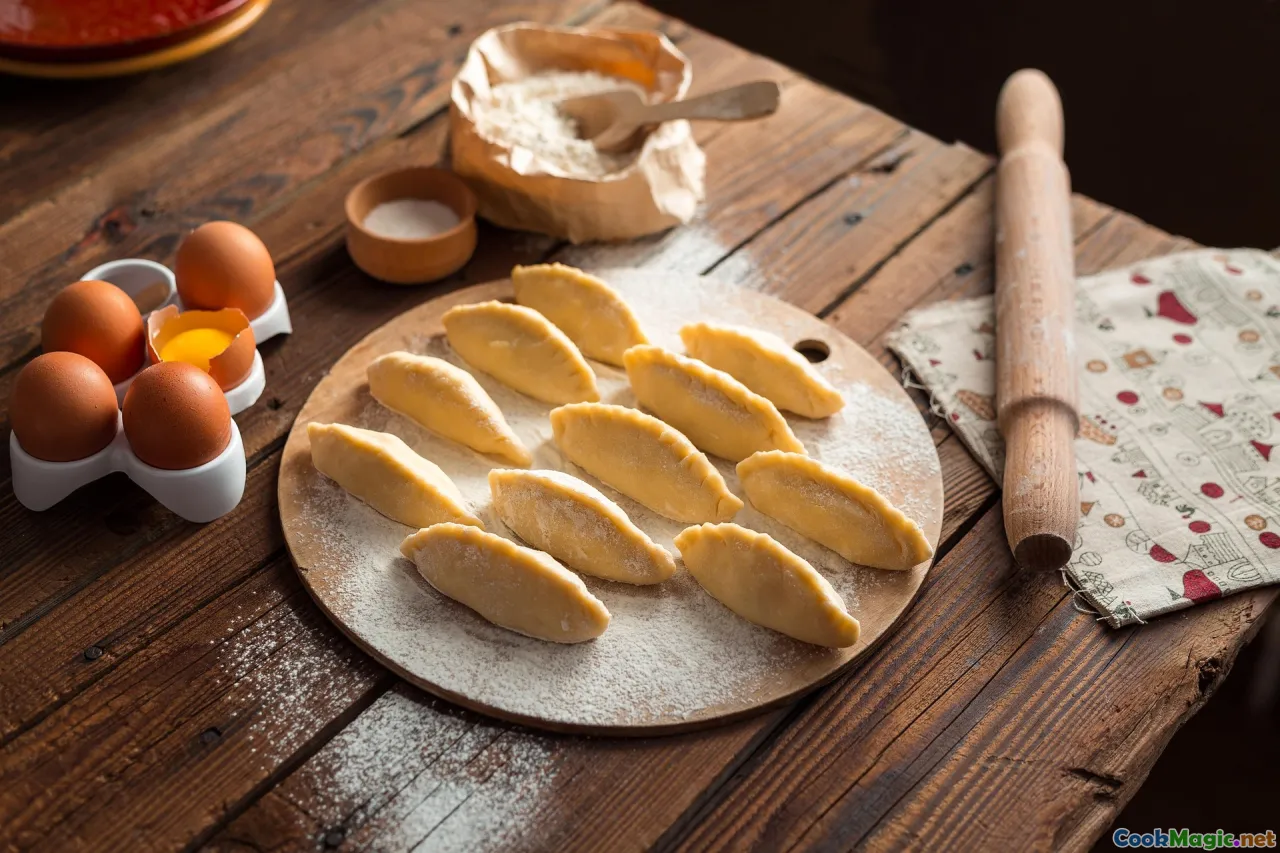
- Too sour: Add a splash of water to loosen, a pinch more salt, and let it rest for an hour. If it’s still biting, a scant 1/2 teaspoon sugar per cup can help; more will flatten the herbs.
- Too bitter: You’ve overdone pennyroyal or scorched the skins. Next time, simmer gently and add ombalo earlier to judge its effect. Now, cut with a little red tkemali (if you have it) or fold in a spoon of yogurt when serving as a dip.
- Too thick: Whisk in hot water by the tablespoon until it flows. Tkemali should drape like light cream.
- Dull flavor: Salt. Always salt first. Then a pinch more coriander seed and a dash of fresh garlic warmed in the sauce but not boiled.
- Not “green” enough in taste: Your plums were too ripe. Compensate with herb brightness—extra dill and a leaf or two of torn tarragon can evoke freshness.
Pantry Math: Making, Storing, and Using It All Week

Batch plan: 2 kg plums yields about 1.2 liters. That’s enough for:
- Four dinners with grilled or roasted meats (2–3 tablespoons per meal)
- Several lunches of fried potatoes or egg scrambles
- A jar to gift to the neighbor who loaned you their grill tongs
Storage: Divide into small jars (200–250 ml). Keep one in the fridge, the rest in the back. Oxygen dulls the herbs; small jars resist staling. Always use a clean spoon, and don’t fear a slight separation—stir it back.
Weekly rhythm:
- Monday: Pan-sear chicken thighs; deglaze with tkemali and water. Finish with butter.
- Wednesday: Roast carrots and onions; glaze with red tkemali and a drop of honey.
- Friday: Mtsvadi on the grill; tkemali in the bowl; beer or amber qvevri wine in the glass.
- Sunday: Brunch eggs with tkemali yogurt; leftover roasted potatoes, revived with a spoonful.
Comparing Sour: Tkemali vs. Lemon, Vinegar, and Pomegranate

- Lemon: Pure citric acid—clean, bright, linear. Tkemali is broader, with herbal bass notes and a slight bitter track. Lemon shouts; tkemali converses.
- Vinegar: Depending on type, vinegar can be sharp and one-dimensional or woody and sweet (balsamic). Tkemali’s fruit acidity is smoother on the palate, and its herb load means you can skip additional aromatics in a pinch.
- Pomegranate molasses: Sweet-tart and rich; it wants to be a glaze. Tkemali is leaner, more versatile, built for everyday. Pair pomegranate with roasted eggplant; pair tkemali with nearly everything grilled or fried.
Thinking this way helps you substitute intelligently. If a recipe calls for lemon, you can sometimes use tkemali and adjust salt and herbs accordingly. If it calls for vinegar, ask whether the dish wants a sour glint or a woven herbal acidity.
Cooking Notes from a Small Kitchen Far from Tbilisi

In my apartment kitchen, last winter’s jars became this year’s ritual. I learned that tkemali can save a pan of unevenly roasted vegetables with a single spoon. I learned to hide a little in a meatloaf mix; that the loaf no longer tasted like a diner classic, but like something with an opinion. I learned to spoon it over a slice of khachapuri I brought home from a Georgian bakery in Queens, an act that would make some grandmothers sigh and others nod, “Well, it is late and we need salad.”
I also learned restraint. Once, faced with bland baked salmon, I poured on tkemali without thinking, and the sauce scolded me. Used with anger, it can taste like punishment. Used with care, it is the hand on your shoulder guiding you toward the plate’s center of gravity.
A Brief History in the Background

Tkemali is as old as the cherry plum trees that line Georgian roads, their blossoms ghosting early spring with white. In older kitchens, the sauce was passed through a ghaveli (a wooden sieve) and simmered in a ketsi, the clay imparting an earth-warm steadiness. Families would make a season’s worth during the first glut of sour plums, when the tree’s enthusiasm outran the appetite for fresh fruit. The sauce stood in for lemon in a place where citrus wasn’t always at hand.
Over time, the pantry became a museum of acidic allies: tkemali, adjika (whose tang is more fire than fruit), vinegar infused with tarragon, and sour grape juice (verjus). Georgian cooks deploy them with painterly intuition. Tkemali is the everyday brush—the one with the worn handle and perfect spring.
Tips for Buying Great Tkemali
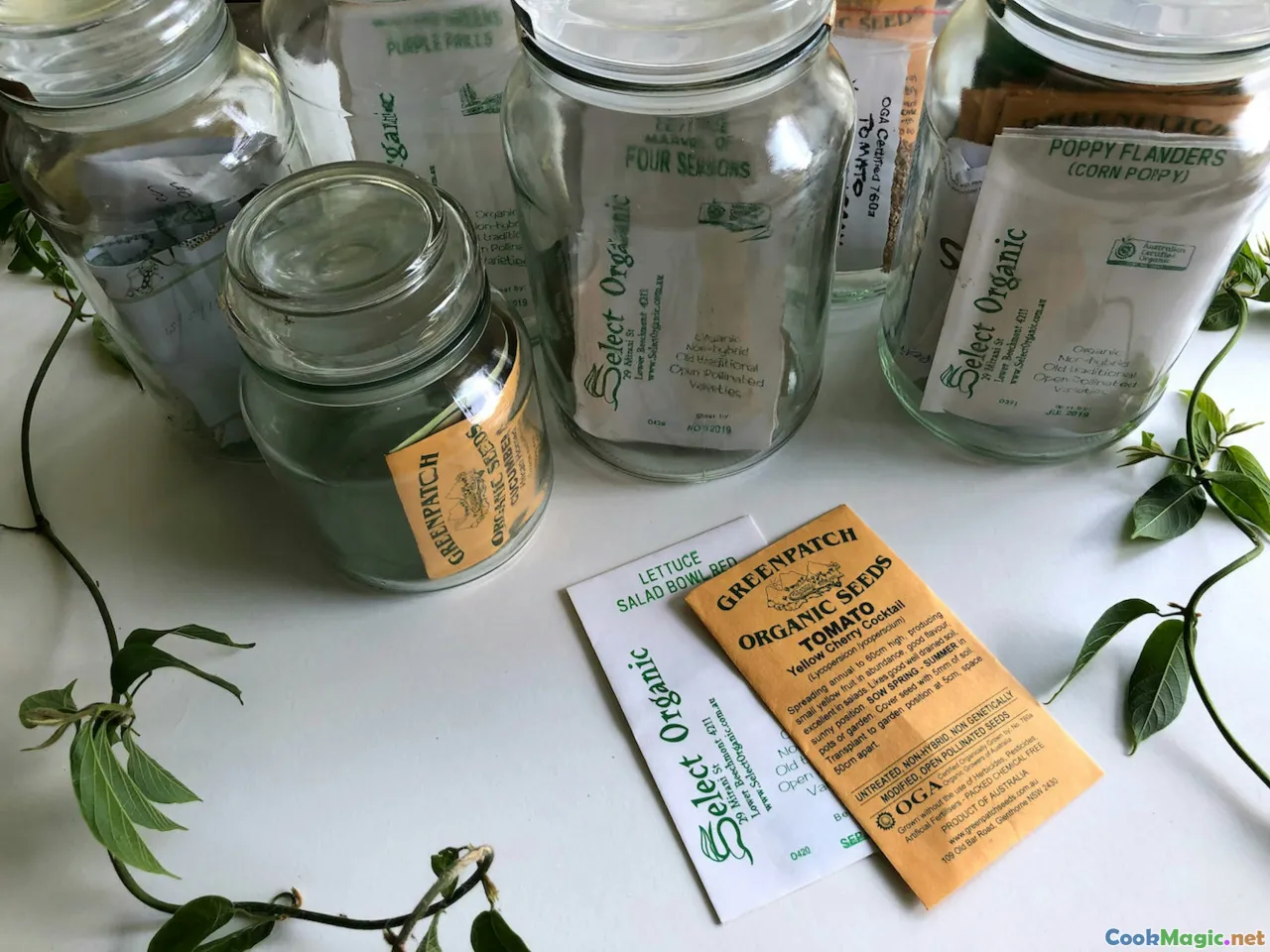
- Color isn’t everything: Green should look fresh but not neon from dyes; red should be ruby to brick, not brown. A slight dullness can still taste wonderful.
- Read the label: Look for cherry plum first, not generic plum puree. Minimal sugar, no thickeners necessary.
- Smell test: If you have the chance to taste, the aroma should open with herbaceousness and a whiff of garlic. If it smells like jam, move on.
- Texture: It should flow. A spoon dragged through leaves a ribbon, not a trench.
- Bring it to life: Even good store-bought tkemali blooms with a squeeze of fresh garlic and a snip of dill stirred in just before serving.
The Emotional Register of a Spoonful

There is a kind of memory that only sourness unlocks. It can be the scrape of a pit against a tooth, the way a grandmother’s hand is steady when yours shakes, the sound of a knife against a cutting board after midnight when you thought you were done. Tkemali carries that memory because it comes from fruit that is not yet ready, transformed by heat and patience and salt and the herb knowledge of people who learned that bitterness belongs at the table as much as sweetness.
When I open a jar, the first scent is a field after rain, then garlic riding a bicycle downhill. I think of the woman in the market, of smoke, of a heavy bottle of amber wine suddenly light in the hand. I think of how a sauce can correct a dish and how a dish can correct a day. There’s nothing mystical in it, and yet there is: fruit and herbs, yes, but also the quiet intention that the ordinary should taste like something you want to stay for.
If you cook with tkemali for a week—really cook with it, not just dab—you’ll find your food leaning toward balance on its own. You’ll salt earlier and with more confidence. You’ll stop reaching for sugar to fix dullness and reach for herbs and acid instead. You’ll be less afraid of bitterness and more loyal to it. And maybe, when the first sour plums show up at your market, you’ll find yourself hoarding them, not for jam, but for a sauce that rides the line between restraint and exuberance, everyday and celebratory, Georgia and wherever you happen to be now.
Make a jar. Put it on the table. Learn its language. Then let it speak for your cooking, clear and green and true.









